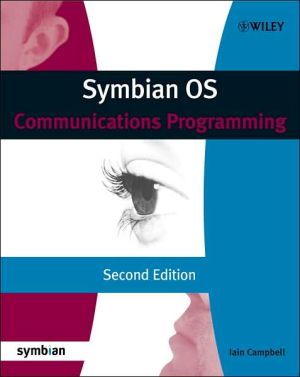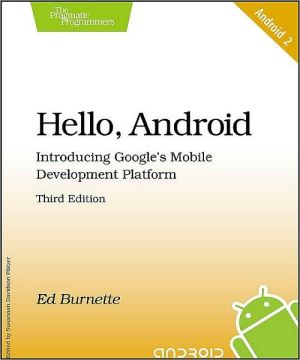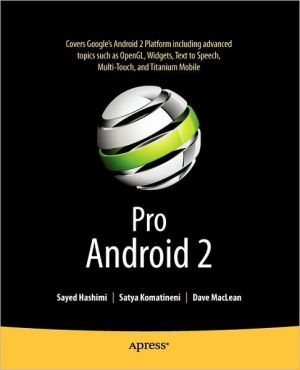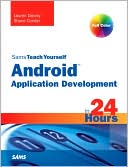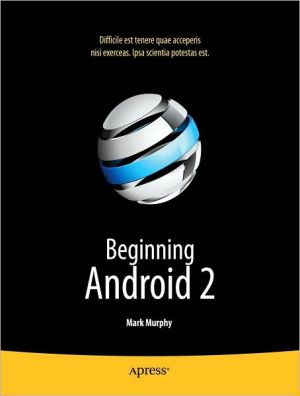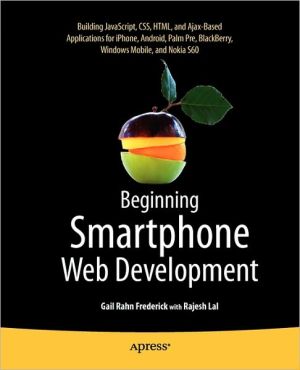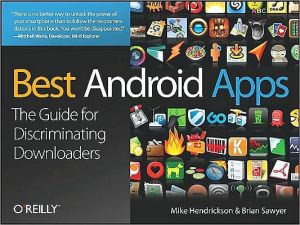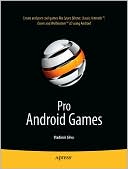Symbian OS Communications Programming
An up-to-date insight into Communications programming at Symbian, incorporating changes introduced by the latest version of Symbian OS (Symbian OS V9), which is the basis of the new phones currently reaching the market. It guides developers through the Symbian OS communications architecture and provides essential information on the communications models and programming interfaces used by Symbian OS.\ \ Clear up-to-date explanations of how Symbian OS Communications works, demonstrated with...
Search in google:
This book guides developers through the Symbian OS communications architecture and provides essential information on the communications models and programming interfaces used by Symbian OS. Each chapter provides background information on the technology, an overview of the functionality provided in Symbian OS and descriptions and examples of how to use the Symbian OS APIs. There are four main sections to the book:Section 1 provides an overview and an introduction to the communications functionality in Symbian OS with a high-level overview of how it all fits together.Section 2 covers low-level communications technologies: Bluetooth, TCP/IP, IrDA, and telephony.Section 3 discusses high-level technologies: the messaging framework and plug-ins (for SMS, MMS and email), the SendAs service, OBject EXchange (OBEX), HTTP and OMA Device Management.Section 4 contains practical information on communications-related development with Symbian OS. Get ahead with this up-to-date guide for Symbian OS communications architecture and networks on Symbian OS v9. Symbian OS Communications Programming has been fully revised and updated for the latest versions of Symbian OS-v9.1 and v9.2. Industry experts from the field of communications introduce you to major communications functionality in Symbian OS and demonstrate how to perform common tasks in each area.
Contributors. About the Authors. Acknowledgments. Symbian Press Acknowledgements. Section I: Introduction and Overview. 1 Introduction. 1.1 What is in this Book. 1.2 What isn’t in this Book. 1.3 Expected Level of Knowledge. 1.4 Structure of this Book. 1.5 To which Versions of Symbian OS does the Information in this Book Apply? 1.6 Example Applications. 1.7 Reading Guide. 1.8 Other Sources of Information. 1.9 The History of Symbian OS Communications. 1.10 Summary. 2 Overview. 2.1 Low-level Functionality. 2.2 High-level Functionality. 2.3 Summary. Section II: Low-level Technology and Frameworks. 3 An Introduction to ESOCK. 3.1 Overview of ESOCK. 3.2 Into Practice. 3.3 Summary. 4 Bluetooth. 4.1 Bluetooth Technology Overview. 4.2 Bluetooth in Symbian OS. 4.3 Example Symbian OS Bluetooth Application. 4.4 AV Protocols and Profiles. 4.5 Summary. 5 Infrared. 5.1 Introduction. 5.2 Infrared Overview. 5.3 IrDA in Symbian OS. 5.4 Summary. 6 IP and Related Technologies. 6.1 IP Networks Overview. 6.2 IP Networks and Symbian OS. 6.3 Network Bearer Technologies in Symbian OS. 6.4 Using the Network Connection. 6.5 Information Gathering and Connection Management. 6.6 Quality of Service. 6.7 Summary. 7 Telephony in Symbian OS. 7.1 Overview. 7.2 Using the ETel ISV API. 7.3 Restrictions and Considerations. 7.4 Summary. Section III: High-level Technology and Frameworks. 8 Receiving Messages. 8.1 Example Application – Summary Screen. 8.2 The Message Server. 8.3 The Message Store. 8.4 Messaging Application Design and Implementation. 8.5 Receiving Application-specific SMS Messages. 8.6 Summary. 9 Sending Messages. 9.1 Examples Provided in this Chapter. 9.2 SendAs Overview. 9.3 Services/Accounts. 9.4 Technical Description. 9.5 Using the UI Platform Send Dialogs. 9.6 A Brief Background to MTMs. 9.7 The Flickr MTM. 9.8 The Flickr Data MTM. 9.9 The Flickr UI MTM. 9.10 Flickr Client MTM. 9.11 The Flickr Server MTM. 9.12 MTM DLLs and Platsec. 9.13 FlickrMTM Shared Settings. 9.14 Installation of an MTM. 9.15 Summary. 10 OBEX. 10.1 OBEX Overview. 10.2 OBEX in Symbian OS. 10.3 Summary. 11 HTTP. 11.1 HTTP Overview. 11.2 Getting Started: Creating a Session. 11.3 Creating and Submitting a Transaction. 11.4 Supplying Body Data. 11.5 Monitoring a Transaction. 11.6 Cancelling a Transaction. 11.7 Closing a Transaction. 11.8 Stringpool. 11.9 Proxy Support. 11.10 Cookie Handling. 11.11 HTTP Connection Configuration. 11.12 Platform Security. 11.13 Filters. 11.14 Summary. 12 OMA Device Management. 12.1 Introduction. 12.2 Device Management In Symbian OS. 12.3 OMA Device Management Essentials. 12.4 The Example DM Adapter. 12.5 Summary. Section IV: Development Tips. 13 Setting Up for Development. 13.1 Bluetooth. 13.2 IrDA. 13.3 Network Connections for IP. 13.4 Telephony. 13.5 'Help, help, my serial port's been stolen'. 13.6 Summary. 14 The Future. 14.1 Better Networks. 14.2 Better Interaction. 14.3 Better Services. 14.4 The End. Appendix A: Web Resources. Appendix B: Authorizing FlickrMTM to Use Your Flickr Account. Appendix C: SendWorkBench.app Guide. Index.
